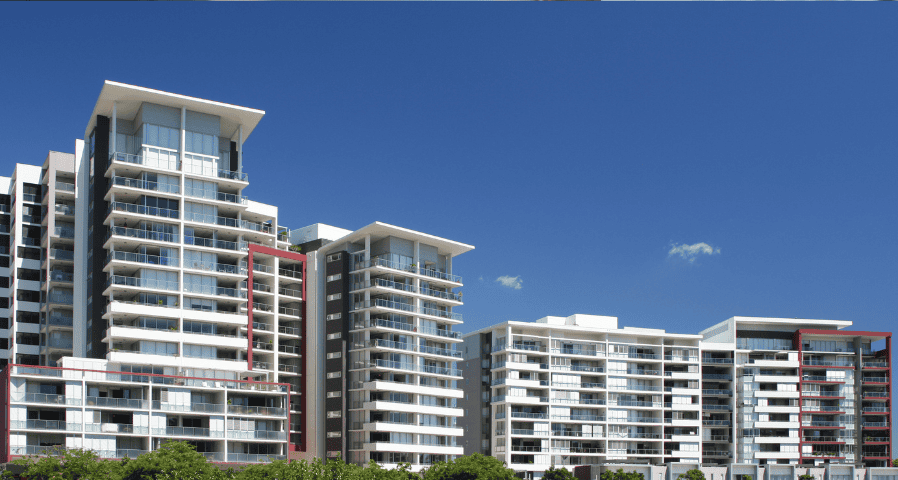An In-depth Look at Commercial Lighting Services
A Closer Look at Color Temperature and Color Rendering Index
First, Edison’s incandescent lamp or light bulb gave off a slightly yellowish glow measuring in at 2700K (Degrees Kelvin). Second, with the advancements in CFLs and LED lamps, we have moved farther away from the first lamps. These early lamps produced a soft white color temperature. Third, with new technologies, we have a vast range of color temperatures providing a large variety of lighting options.
- Color Temperature for Commercial Lighting Services
- There are three primary types of color temperature for lamps:
- Soft White (2700K –3000K)
- Bright White/Cool White (3500K –4100K)
- Daylight (5000K –6500K)
As an example, the higher the degrees Kelvin, the whiter the color temperature. While whiter lights may appear brighter than lower kelvin readings, the number of Lumens does not change. The actual brightness is unaffected.
Color Rendering Index for Commercial Lighting Services
Depending upon your lamp’s location and the desired effect, CRI or Color Rendering Index need consideration. The CRI measures the ability of a light source to reproduce the colors of an object compared to an ideal light source, i.e., incandescent or natural light. The CRI scale runs from 0-100, with lights closer to a 100 CRI showing more accurate colors across the spectrum. While this is not going to be a primary consideration for a warehouse, retail stores should pay close attention to their lamps CRI.
Want a closer look at CRI and Color Temperatures? Check out our blog, Understanding CRI, CCT, and Foot Candles in High Quality LED Lighting.

Learn more about our affiliated companies offering Lighting Products and Incentive & Rebate Recovery Services.
Lighting 101
Commercial Lighting Services are essential to a productive and safe environment. Whether it is for employees, customers, or personal use. Furthermore, as the lighting industry changes, so too does the terminology. Thus, we are going to take a basic look at lighting terminology. As an example, this will better explain the different solutions and services available when partnering with Action Services Group as your commercial lighting services provider.
The Different Types of Lamps on the Market Today
There are four basic types of lamps used on the market today. Your lamp selection should take into consideration your lighting performance needs, maintenance concerns, and energy costs. Your commercial lighting services provider should discuss these lamps with you.
Incandescent Lamp
Incandescent lamps remain the most common light bulb in use today. They range from 40-110 watts, usually with a warm, yellow-white light. The incandescent lamp provides a warm, inviting quality with an excellent color rendition that compliments most skin tones and is psychologically appealing. Even with the shifting trend towards LED, incandescent lamps remain the most common, mainly due to the price of the lamp. While the lamp may be inexpensive, they are not the most energy-efficient, nor do they last the longest. The average incandescent bulb lasts between 700 –1,000 hours. This may seem like a long time, but with some lamps, depending upon location, needing to stay lite for 20 –24 hours a day, other options provide a much longer lifespan.
How does the Incandescent Lamp Work?
The incandescent lamp is an electrical lighting source produced by incandescence or the emission of light caused by the heating of a filament. Typically, the incandescent lamp consists of a tungsten filament contained in a glass enclosure. There is also a stem or glass mount attached to an airtight base. Small embedded wires support the filament or lead wires. An electrical current passes through the filament which heats it to a temperature that produces light.
Fluorescent Lamp
The fluorescent lamp comes in two varieties, the compact fluorescent and the linear fluorescent both of which function identically. The fluorescent is a gas-discharge lamp that comes in a wide range of sizes, wattages, and colors, with long life, low cost, and high energy efficiency.
The compact fluorescent comes in a screw-in or a plug-in. The screw-in can generally be used in an existing screw socket without additional equipment while the plug-in requires a ballast and socket specific for its base configuration.
The linear or tube fluorescent is still the most widely used in commercial settings. This is mainly due to its long life, and it remains one of the least expensive options on the market. The fluorescent tube also comes in a wide variety of applications based on lamp type.
How does the Fluorescent Lamp Work?
The fluorescent lamp is a gas-discharge lamp. Using a process known as inelastic scattering, electricity emitted from cathodes excite mercury vapor contained within the glass. Also included within the glass are phosphors and a noble gas, which glow when the mercury atoms produce ultraviolet light, thus creating a visible light source.
Halogen Lamp
The halogen gives off a white light, that is the closest to natural daylight. While the halogen is more efficient than an incandescent, you must take extra care when changing out these lamps. The halogen lamp warms quickly and can cause burns to an unsuspected person or create a fire hazard in specific locations. Oil residue from the human hand can also rub off on the lamp, potentially causing the lamp to warm to quickly, which could cause the lamp to explode. Make sure you wear gloves when changing out halogen lamps.
How does the Halogen Lamp Work?
The halogen lamp is the most like the incandescent. Mainly due to both using a filament that heats to the point of glowing. The incandescent lamp evaporates the tungsten from the filament, causing blackening of the lamp. While the halogen eliminates the tungsten evaporation by reacting to the halogen gas. The halogen then returning some of the tungsten to the filament extending the life of the lamp.
LED Lamp
The LED lamp stands for light-emitting diodes and is the most energy-efficient lighting option on the market today. The LED is a solid-state technology meaning the materials used to generate light are enclosed within a solid material. The heat produced by the lamp is absorbed into a heat sink, which keeps the lamp cool to the touch and saves considerable energy. Due to the solid-state of the LED, they are much less susceptible to failure caused by shock or vibrations. Another significant difference between LED and other lamps is the fact that LEDs don’t burn out. They experience lumen deprivation causing their light output to decrease. If considering a lighting upgrade for your facility, a Turn-Key LED Retrofit is the most energy-efficient lighting upgrade you can perform.
How does the LED Lamp Work?
The LED or light-emitting diode is a two-lead semiconductor that emits light when activated. The electrons recombine with electron holes once a suitable voltage is applied to the leads, releasing energy in the form of photons, causing an effect called electroluminescence, creating a visible light source.
Check out our blog on Understanding Luminous Efficiency.
Lighting and LED Product Education
For an in-depth look at individual lighting applications, their energy usage, maintenance costs, and lighting performance, along with the benefits of retrofitting to LED, visit our Lighting and LED Product Education Center.
Individual Lighting Application Pages:
- Parking Lot and Area Lighting
- Parking Garage Lighting
- Canopy Lighting
- Flood Lighting
- Post Top Lighting
- Bollard and Pathway Lighting
- Wall Pack Lighting
- Troffer Lighting
- Fluorescent Lighting
- High Bay and Low Bay Lighting

Considering Different Types of Lighting
When considering what type of lighting is best suitable for your needs, several factors should be discussed:
- Lighting Performance
- Lighting Maintenance
- Energy Costs
This should be the starting point when considering your lighting options. Your commercial lighting services provider should speak to you about these factors. Which of these three factors are most important to your project? If in a retail setting, the Color Rendering Index will be a significant consideration. When debating the best lighting for a warehouse, maintenance should be evaluated due to the equipment needed to change out your lamps. When taking multiple locations into account, you might want to place a higher value on Energy efficiency for the most substantial ROI.
Consider a National Lighting Company
Narrowing down the best commercial lighting solution for your organization can be a challenging endeavor. You might make a decision based on maintenance but then realize that energy efficiency outweighs the maintenance factor. If moving to a commercial lighting services provider, consider partnering with a service management provider that can supply a national lighting and electrical maintenance program.
What Should You Look for in a Commercial Lighting Services Provider?
Review these items when vetting a national lighting, sign, and electrical service provider.
- Available Resources
- Available Personnel
- Reporting Capabilities
- Data Capturing for lighting and signage components
- Lighting Recommendations
- Product Neutral
That is why partnering with Action Services Group should be the first decision you make for your organization’s lighting needs.



